Paratha recipe- Atta paratha is the most basic & popular unleavened Indian flatbread. It is made with whole wheat flour, salt, oil and cooked with ghee or oil. These are made without any stuffing. It tastes delicious with a pickle, curd or some curry. You can serve these for breakfast or even lunch and dinner.
Here is my detailed recipe of paratha with step by step photos. This is a fool proof recipe that beginners can make with ease. Here I have used vegan butter so this is a vegan recipe too.
For more easy Indian breads please check vegan naan, kulcha, butter naan, bajre ki roti, thepla, missi roti recipes.
Parathas are a staple at most Indian homes, especially in north India. They can be with or without a filling. Parathas with aloo, paneer, gobi stuffing are some of the very popular ones.
This atta parantha is often made for lunch with a good filling curry or served for breakfast with some spicy pickle.
I usually make parathas for lunch or dinner as it is little heavy for us for breakfast. Whenever I make these plain ones, I prepare a rich curry like shahi paneer, paneer butter masala, green peas masala, palak paneer, dal makhani, kadai vegetables etc. These parathas are perfect vehicle for those rice curries 🙂
Oftentimes making parathas can be intimidating especially for beginners so I am sharing this detailed guide on these here.
I have listed out some variations and tips to get these right every time. Hope you find this useful and enjoy.
What Are Parathas?
Parathas are most common and popular unleavened Indian flatbread. They are made across the country in various ways with mild changes. These are very filling, satiating and wholesome meal option.
These are traditionally made of stone ground whole wheat flour or chakki atta but there are many variations with chickpea flour, plain flour or all purpose flour too. South Indian parotta is a another form where maida or all purpose flour is used.
Paratha can be broadly classified into two types. Plain layered ones and stuffed paranthas. This post is all about making delicious plain paranthas with atta. Usually ghee is used for this but I used melted vegan butter as I had to use my stash.
A good paratha is soft, flaky with slightly crispy edges, flavorful and very delicious. It is a healthier choice for breakfast or lunch especially when paired with good nutritious side.
You can roll a paratha as square or triangle or circle. Just for some whimsy I roll my stuffed parathas as circle and these plain ones mostly square 🙂
This is a super simple recipe with absolute pantry staples. All you need to make parantha are wheat flour, salt, oil or ghee and water.
Here is how I make paratha with all details. Do try out this healthy, delicious, flaky paratha and enjoy. These are
wholesome
filling
healthy
easy to make
delicious with Indian curries and dal
How To Make Paratha Recipe
Making Paratha Dough
Combine 2 cups whole wheat flour or atta, 1/2 teaspoon salt and 1 teaspoon oil in a wide mixing bowl. Mix thoroughly with a spoon. Oil is optional.
Now to make paratha dough, slowly add water. Quantity of water usually depends on the quality of the flour. Start with 3/4 cup water and add up to 1 or 1.25 cups as required. I usually add 1 cup + 2 tablespoons water for 2 cups flour
Mix water well with the flour using fingers. Once all the water is mixed with the flour you can start kneading the paratha dough.
Knead the dough very well for 10 minutes until the dough becomes soft and pliable. You can add some water if needed while kneading but do not add a lot. The dough will become soft as you knead. Cover with a damp kitchen towel and set the paratha dough aside for 15-20 minutes.
Rolling the dough.
Divide the dough into 9-10 equal parts and roll them into smooth balls first.
Dust a working surface with some loose flour. Place a dough ball on the floured surface and roll it over the flour. You can use all purpose flour for dusting.
Flatten it into a disc first with your hands.
Now using a rolling pin roll the dough into a thin circle of 4 or 5 inches diameter. You can roll the dough in such a way that it has even thickness all over.
Smear melted butter or ghee or oil all over it. Now you can sprinkle some dry flour to keep the layers intact while cooking but it is optional.
Fold the edges towards the center as seen in the picture.
Again bring the edges to the center to form a square paratha.
Now with a rolling pin roll this into a thin paratha without disturbing the layers or shape. Slowly roll from each side to maintain the square shape. Place it on a plate.
Making Triangle paratha
To roll it in triangle shape, first of all rollthe dough into a thin circle of 4 or 5 inches in diameter on floured surface.
Apply ghee or oil all over it. Fold it intohalf to get a semi circle. Now fold it further into half to get a triangle.
Roll it gently to a thin triangle with out disturbing the shape. Cook as explained below.
Cooking Paratha
Heat a cast iron skillet or tawa or flat frying pan over high flame. Once the tawa is hot place a rolled paratha over it. In few seconds it will dry out and some bubbles and brown spots will appear all over. Now maintain medium high heat.
Now flip the paratha gently using a spatula. The paratha will puff up layers will begin to separate. Add vegetable oil or ghee only after both sides have cooked well. Once the parantha turns golden brown and edges are well cooked remove from flame.
Finish making parathas similarly with remaining dough. Keep the cooked parathas stacked to retain softness for long time. You can also apply some ghee while stacking.
Serving Suggestions
These parathas are very delicious and flavorful. They taste great when served piping hot with various side dishes. You can serve these as breakfast or lunch.
For breakfast I usually serve paratha hot with paneer bhurji, pickle and yogurt.
For lunch or dinner it goes really well with wholesome curries like chole, dal makhani, kadai paneer, dal fry.
It also tastes good with a simple salad, raita too.
How To Keep Paratha Soft?
First of all make sure the dough is soft pliable and supple. If the dough is not soft, parathas will not turn out soft.
Next always cook them in a hot skillet on high heat. if you cook in low flame they become chewy and hard on cooling.
Next always stack the cooked parathas, this will keep them super soft and prevent from drying.
You can store them in an insulated box or a bamboo box lined with muslin cloth.
If you want to pack them in tiffin, you can roll them in foil.
Storing Parathas
Paratha keep well for 2-3 days at room temperature if stored well. You can refrigerate it for 5-6 days and freeze for months.
If you wish to freeze a large batch, roll and cook them partially say for 10 seconds from each side. Let cool thoroughly. Stack them alternating a paratha and a piece of parchment and freeze in zip lock bags.
To serve reheat them in a tawa with few drops of oil from both sides until completely cooked and golden brown spots.
Alternately you can make the dough and store for 3-4 days in airtight box. Just bring it out an hour before you plan to make parathas.
Tips To Make Perfect Paratha
Flour- the taste, texture and flavor of your parathas will be directly proportional to the quality of wheat flour you use. Authentic parathas are made with stone ground or chakki atta with bran. The flavor is so delicious, nutty and the quality o parathas is so good with this flour.
If you cannot get stone ground whole wheat flour you can use any of your favorite brands from the grocery store. Use organic flour if possible for better flavor and texture.
Kneading the dough properly is the next important step for making soft parathas. Add water as required and knead until the dough is very soft and pliable. Soft dough yields soft breads.
Letting the dough sit for 15-20 minutes helps in developing gluten makes the paranthas softer.
Water required for kneading the dough depends on the quality of the flour you use. If the flour is super fine you will need less water and if it has some bran you will need more water. Use the quantity given here as base and add as required.
Use light hands while rolling the parathas. If you apply lots of pressure the layers will be disturbed and parathas will not turn flaky. You can roll into preferred shape like square paratha, triangle paratha.
You can use oil or ghee to make the paratha. Usually it is made of ghee but vegans can easily use any vegetable oil or vegan butter.
Maintain medium high heat for even cooking. If you cook in very low flame parathas will become hard and if you cook in very high heat, they will burn easily.
Variations
Along with this plain parantha recipe you can make many variations and make different flavored parathas.
You can make spinach paratha or palak paratha by adding 1 cup blanched and pureed spinach to the flour. Add very less water as required to make the dough. Here is the detailed recipe of palak paratha with video.
Add some ajwain or carom seeds for flavor and make ajwaini parathas.
Boil and mash 2 small potatoes, 1 small carrot, few cauliflower florets and 1/4 cup green peas very well. Add this to flour followed by a pinch of garam masala powder, chili powder and salt. Add just enough water to make a soft dough. Roll into circles and cook with ghee or oil. This vegetable paratha tastes excellent with yogurt and pickle.
Another popular variation is methi paratha where we add 1 cup tightly packed fenugreek leaves to the dough.
You can also make lachha paratha with pudina or mint leaves or just as such. They taste so crispy, yummy and absolutely flaky.
Frequently Asked Questions
The most basic recipe of paratha can be made with just wheat flour and water. Even salt is optional. Adding few drops of oil enhances flavor and texture. Additionally you can also add milk or yogurt to make it softer and retain softness for long time
Yes when made with good quality wheat flour, desi ghee or plant based fat and eaten in moderation. These are filling, rich in fiber and satiating.
Naan is leavened flatbread made of plain flour and yeast. Paratha is made with whole wheat and unleavened.
Any good quality fine ground whole wheat flour is good for making paratha.
Are you making this recipe? I would love to see a snap of your creation too. Do snap a pic and share on Instagram with hashtag #cookclickndevou and please give a star rating ★ in the recipe card above. Follow us on Pinterest , Instagram, Facebook for more recipes and ideas.
Recipe Card
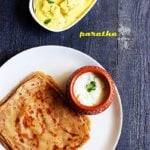
Paratha Recipe- Atta Parantha
1 CUP = 250 ml
Ingredients
- 2 cups whole wheat flour
- 1 teaspoon oil
- 1/2 teaspoon Salt
- Water 1 cup to 1.25 cups
- 2 tablespoons butter I used vegan butter
- Oil or ghee to fry paratha I used oil
Instructions
Making dough
- Combine 2 cups whole wheat flour or atta, 1/2 teaspoon salt and 1 teaspoon oil in a wide mixing bowl. Mix thoroughly with a spoon. Oil is optional.
- Now to make paratha dough, slowly add water. Quantity of water usually depends on the quality of the flour. Start with 3/4 cup water and add up to 1 or 1.25 cups as required. I usually add 1 cup + 2 tablespoons water for 2 cups wheat flour.
- Mix water well with the flour using fingers. Once all the water is mixed with the flour you can start kneading the paratha dough.
- Knead the dough very well for 10 minutes until the dough becomes soft and pliable. You can add some water if needed while kneading but do not add a lot. The dough will become soft as you knead. Cover with a damp kitchen towel and set the paratha dough aside for 15-20 minutes.
Rolling the dough.
- Divide the dough into 9-10 equal parts and roll them into smooth balls first.
- Dust a working surface with some loose flour. Place a dough ball and roll it over the flour.
- Flatten it into a disc first with your hands.
- Now using a rolling pin roll the dough into a thin circle of 4 or 5 inches diameter.
- Smear melted butter or ghee or oil all over it. Now you can sprinkle some dry flour to keep the layers intact while cooking but it is optional.
- Fold the edges towards the center as seen in the picture.
- Again bring the edges to the center to form a square paratha.
- Now with a rolling pin roll this into a thin paratha without disturbing the layers or shape. Slowly roll from each side to maintain the square shape. Place it on a plate.
Cooking Paratha
- Heat a cast iron skillet or tawa or flat frying pan over high flame. Once the tawa is hot place a rolled paratha over it. In few seconds it will dry out and some bubbles will appear all over.
- Now flip the paratha gently using a spatula. The paratha will puff up layers will begin to separate. Add oil or ghee only after both sides have cooked well. Once the parantha turns golden brown and edges are well cooked remove from flame.
Notes
- Resting the dough is important for soft parathas.
- Stack the prepared parathas so that they stay soft.

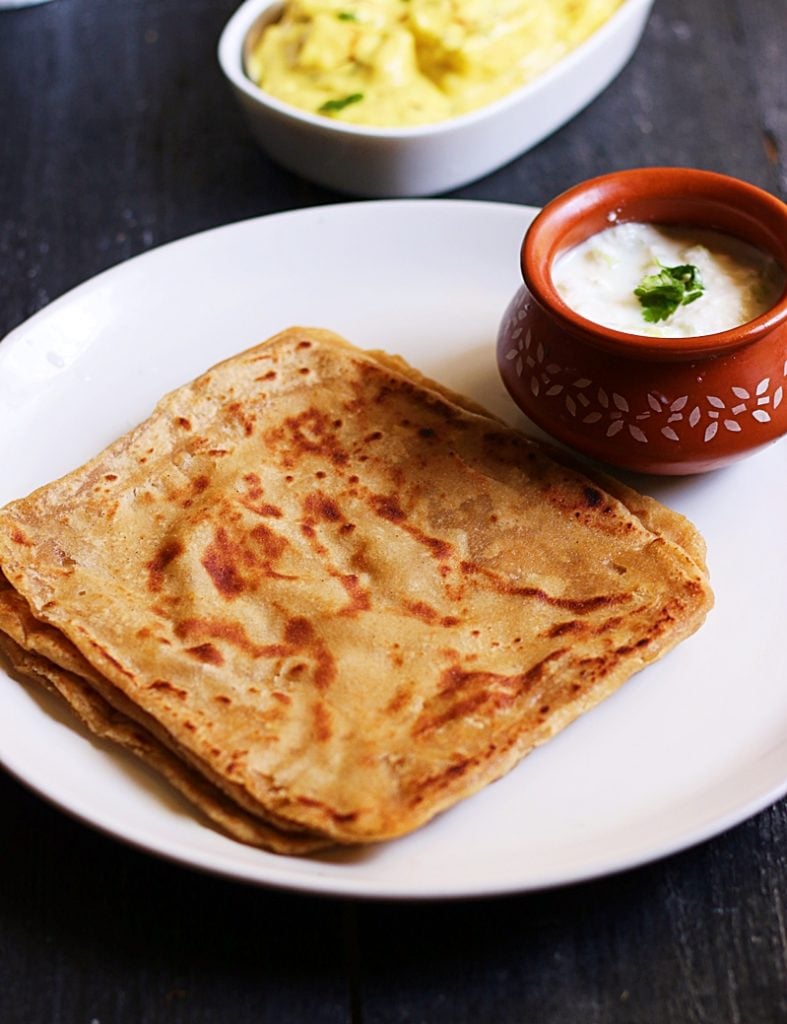
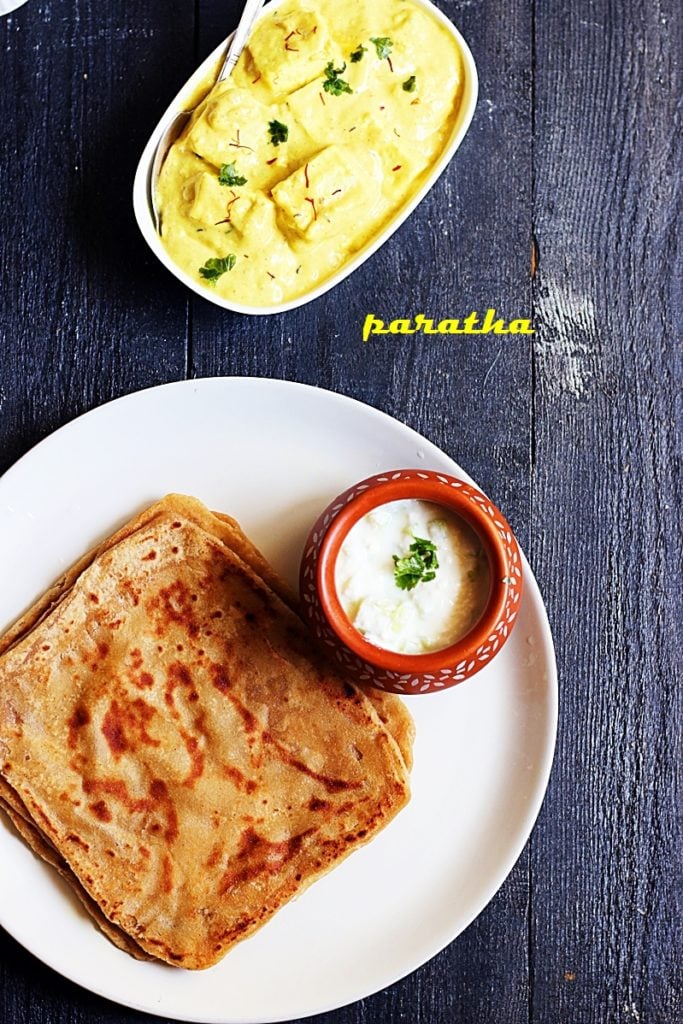
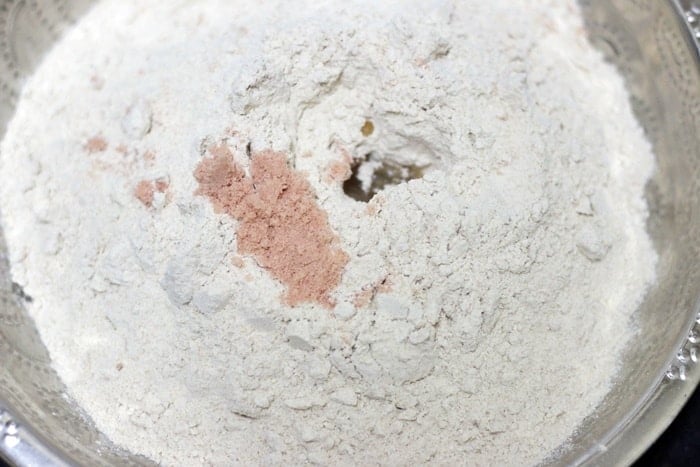
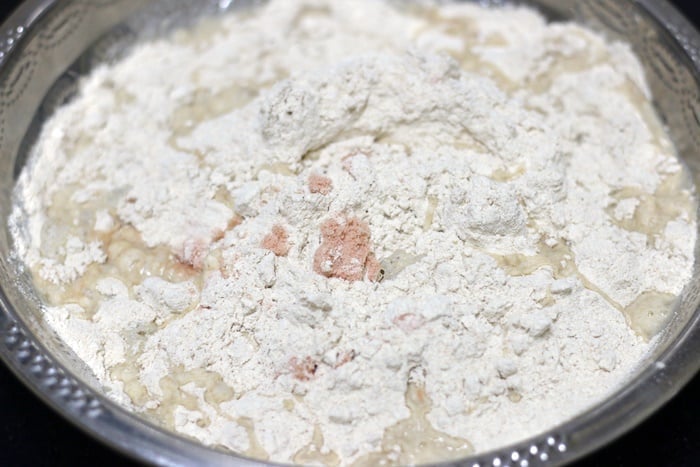
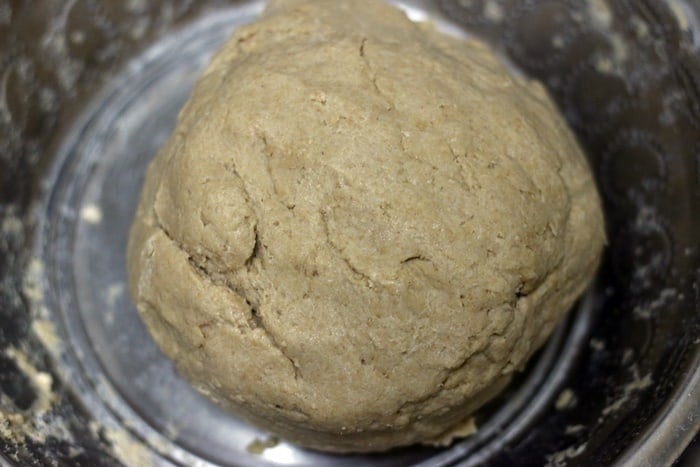
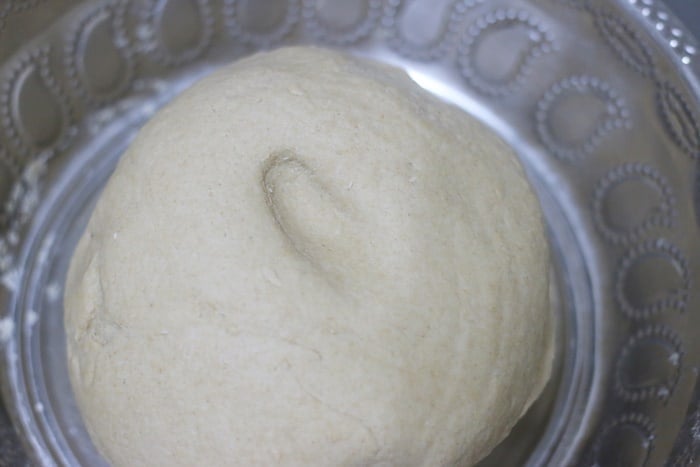
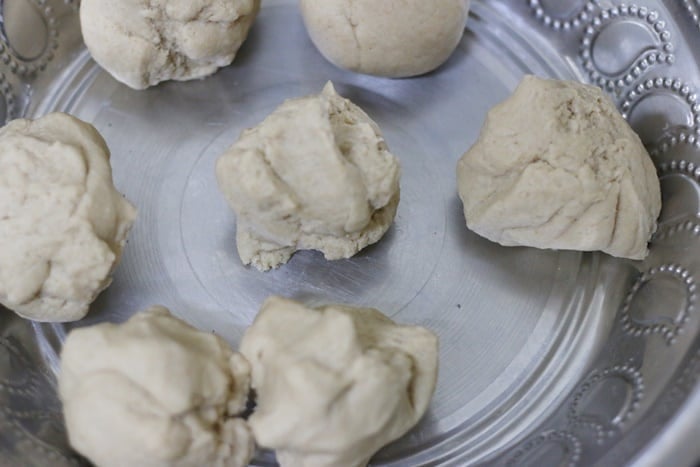
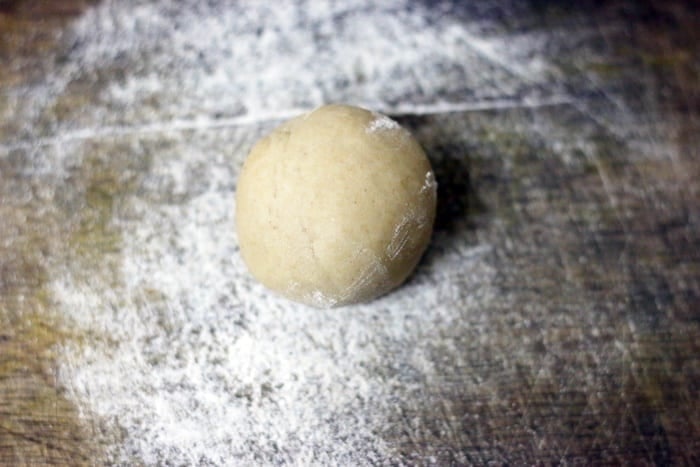
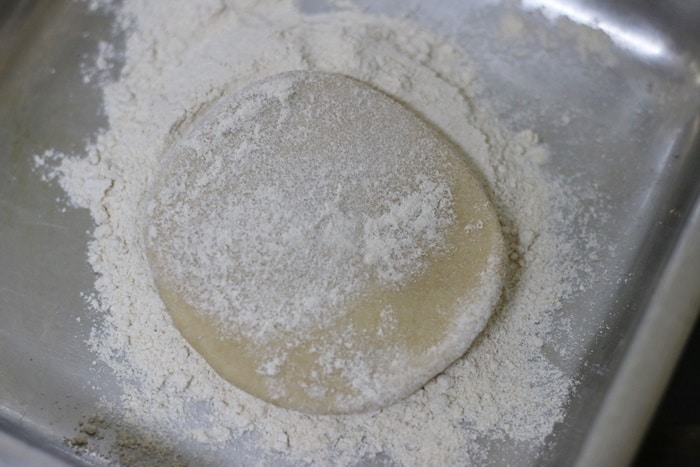
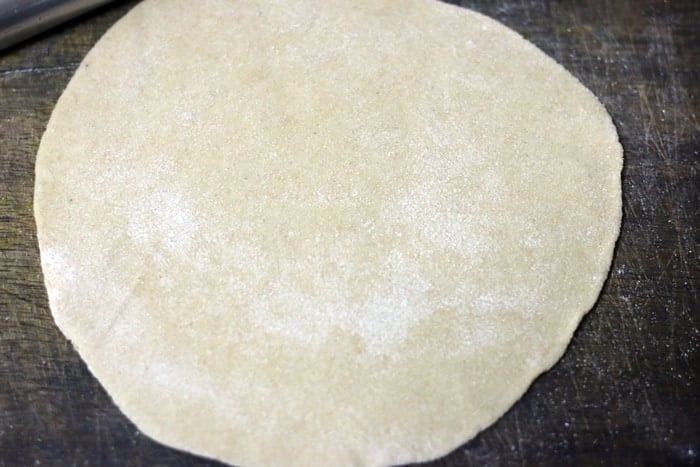
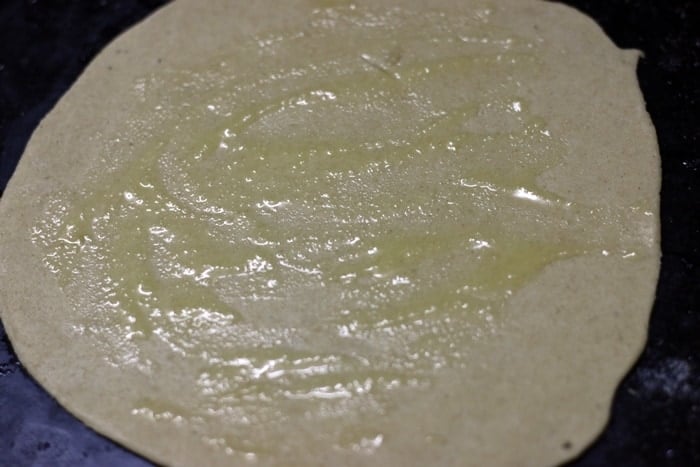
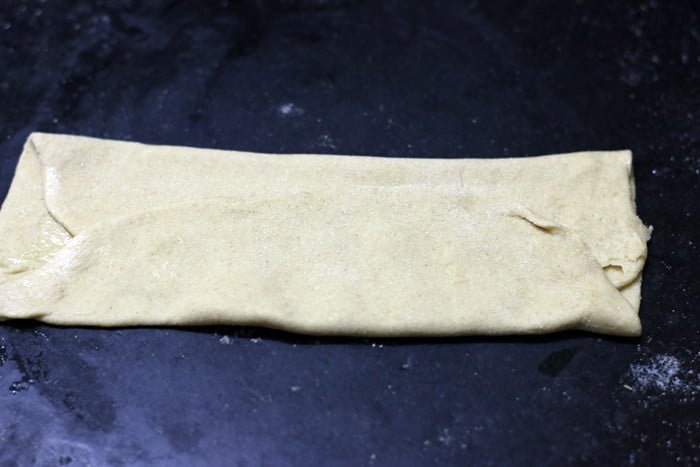
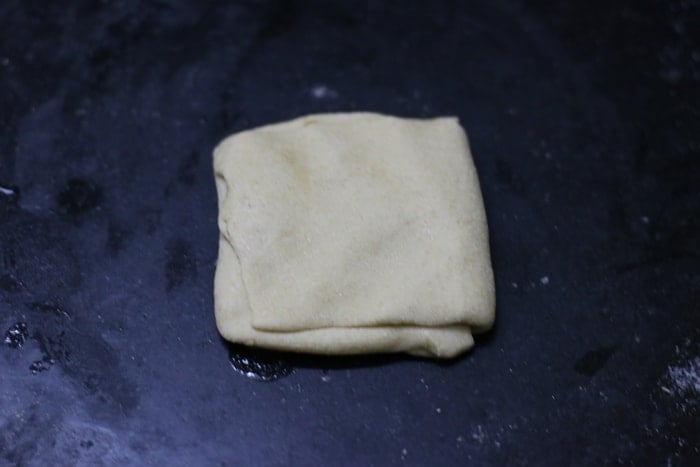
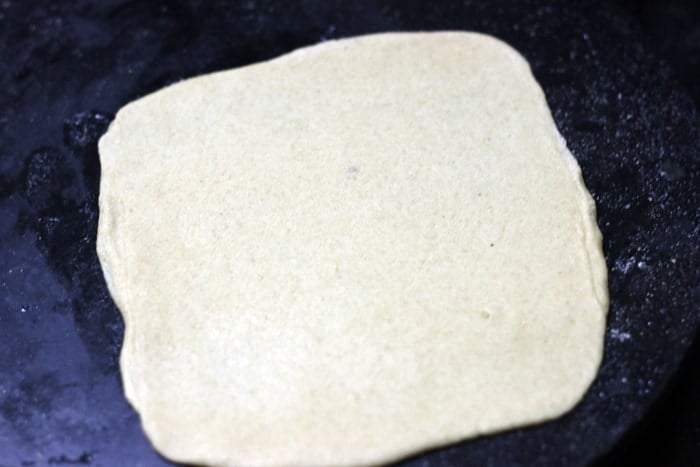
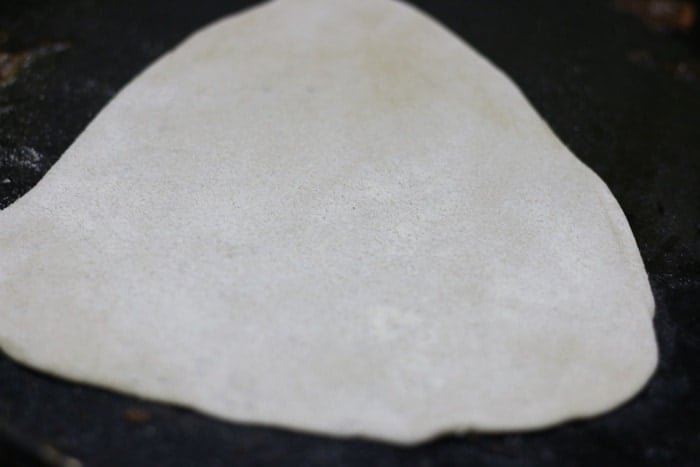
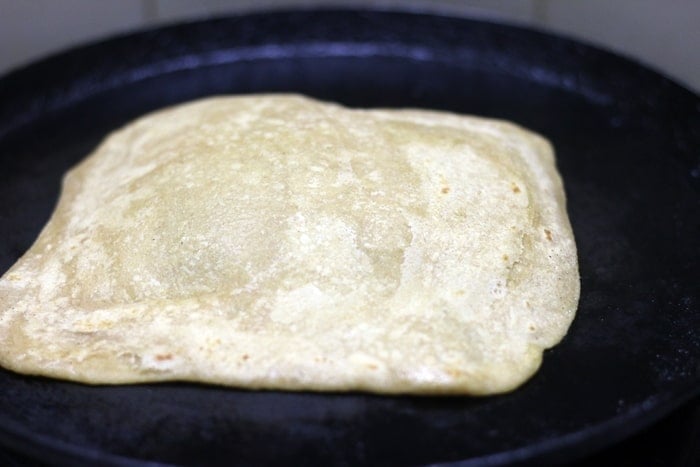
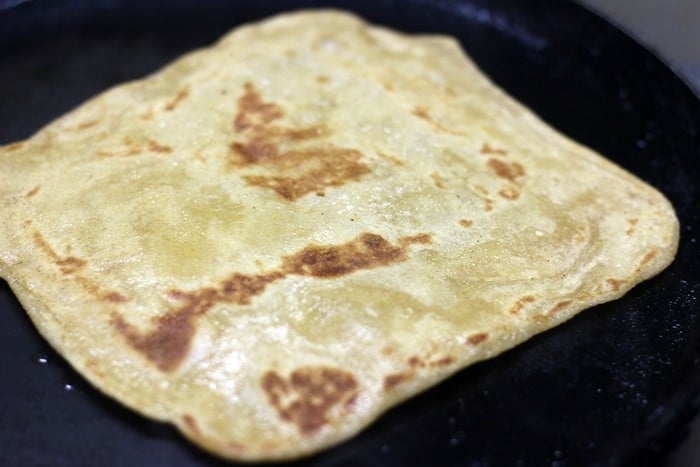
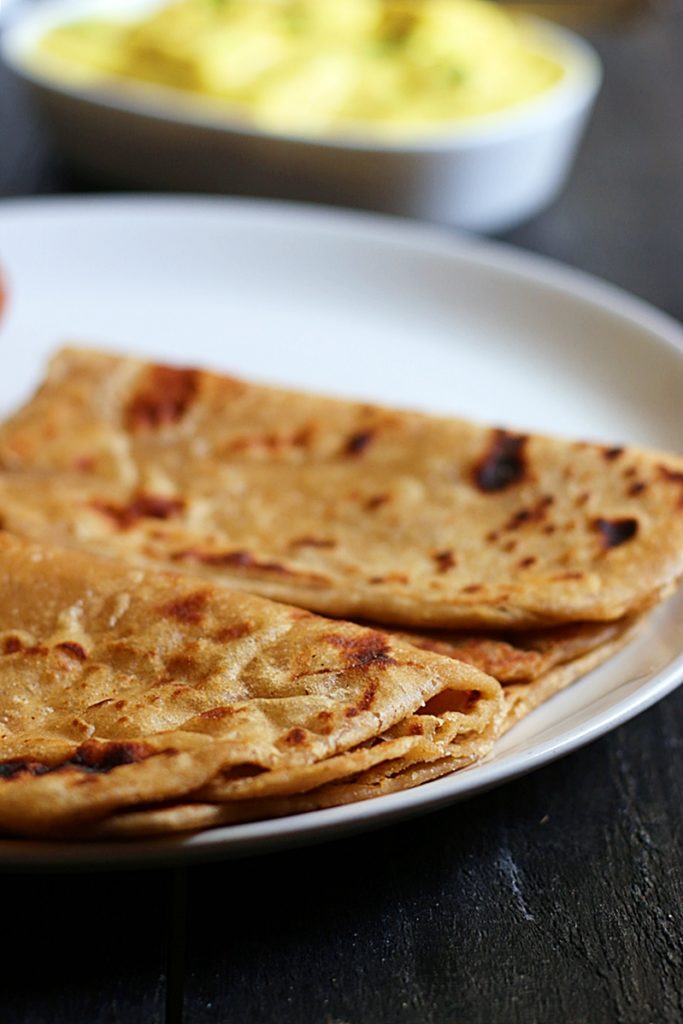
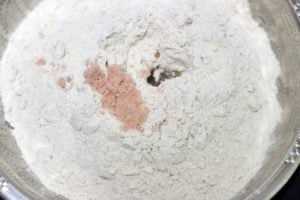
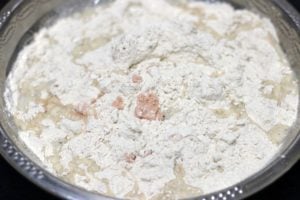
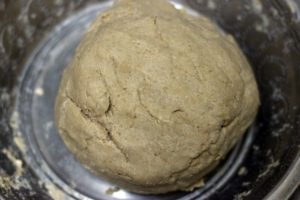
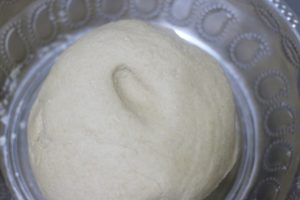
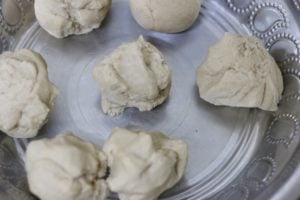
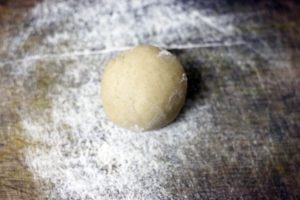
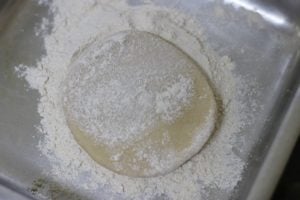
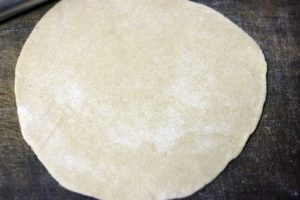
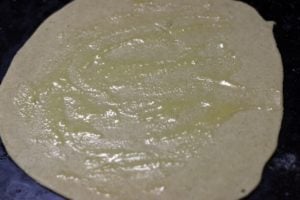
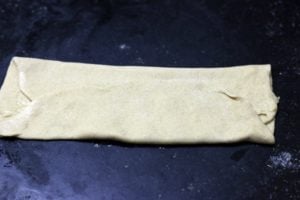
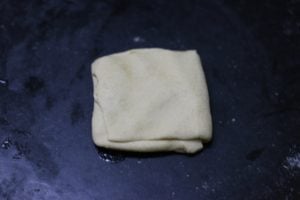
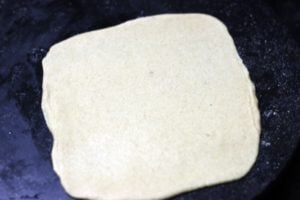
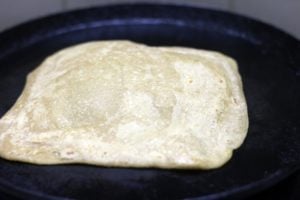
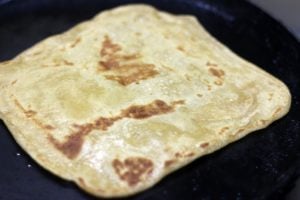
janaki narasiman says
Paratha is my all time favorite with pickle and raita.